COPD Management: Therapeutic Approaches and Clinical Decision Making
VerifiedAdded on 2023/06/15
|7
|786
|436
Presentation
AI Summary
This presentation focuses on the case of Ngarla Kngwarreye, a COPD patient, and identifies two therapeutic approaches: ipratropium via nebulizer and pulmonary rehabilitation. It provides the rationale for selecting these interventions, discussing their benefits, risks, and guidelines. The presentation explains the pathophysiological basis of pneumonia, outlining symptoms like fast and shallow breathing. Ipratropium is highlighted for its ability to control wheezing and shortness of breath by relaxing airway muscles, while pulmonary rehabilitation involves lung exercises to reduce coughing and improve overall quality of life. The clinical decisions, including medication provision and the use of ipratropium, are justified based on their effectiveness in improving breathing and reducing hospitalization risks. Desklib provides more solved assignments and study resources for students.
1 out of 7

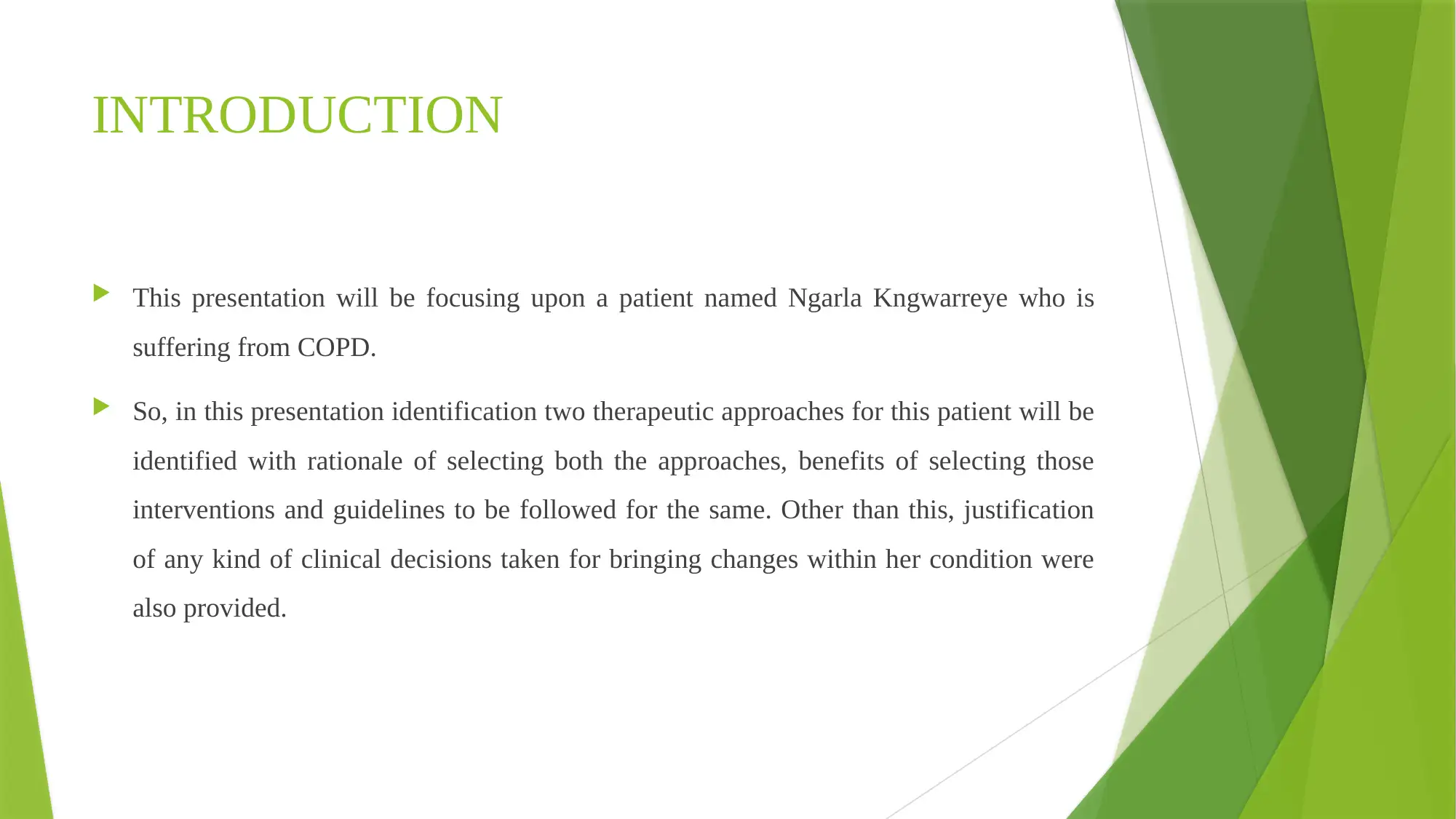
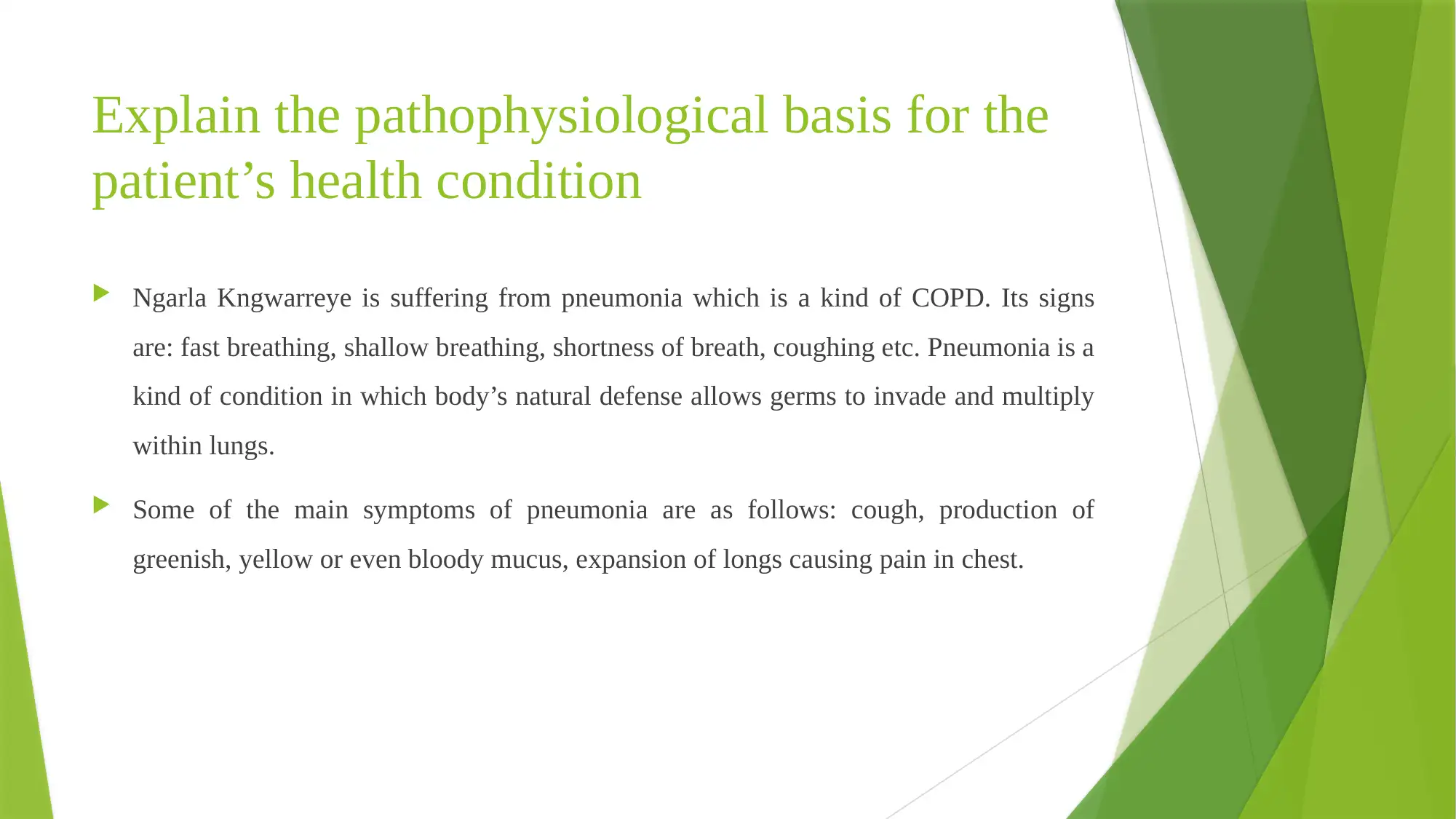

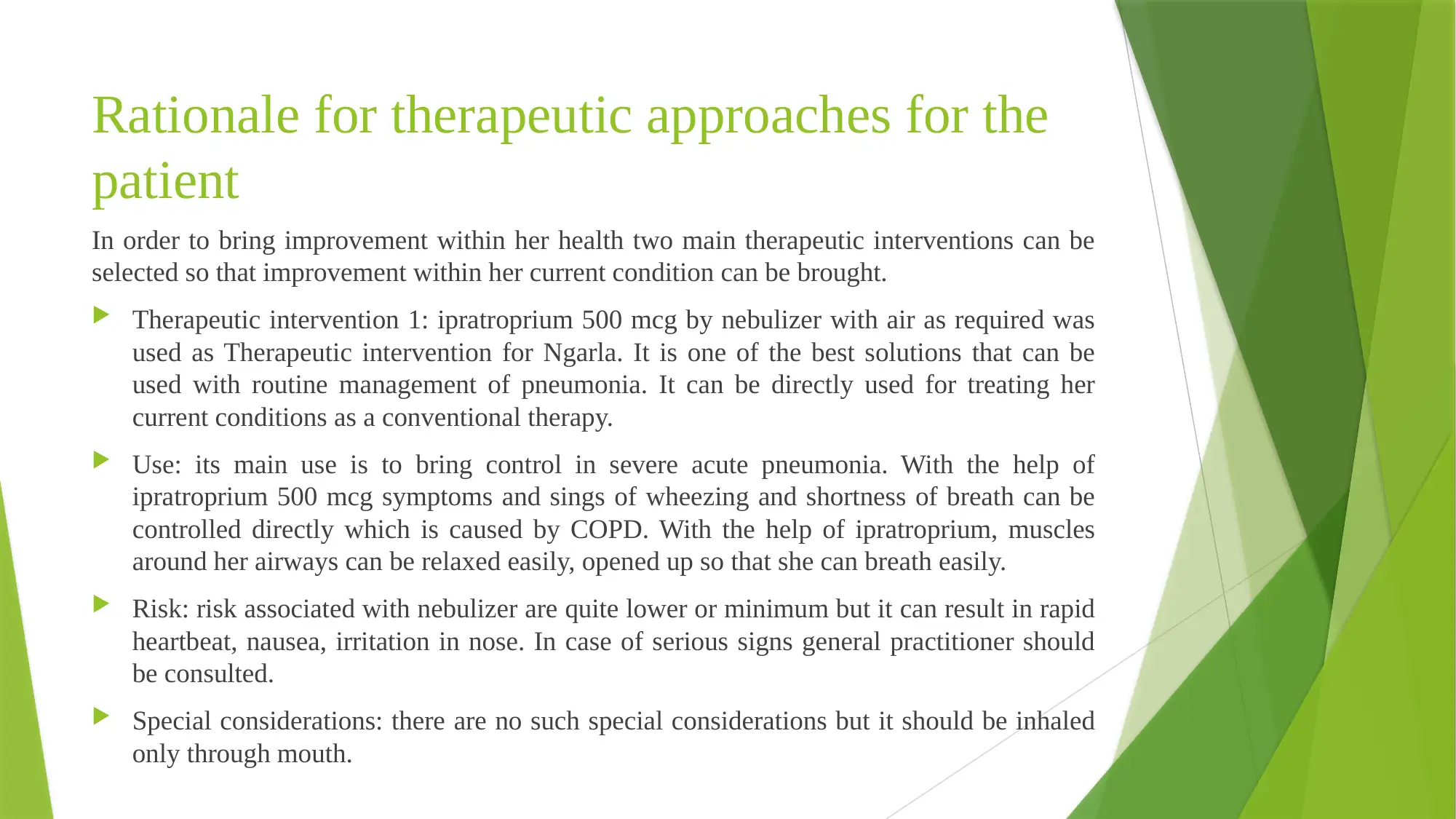
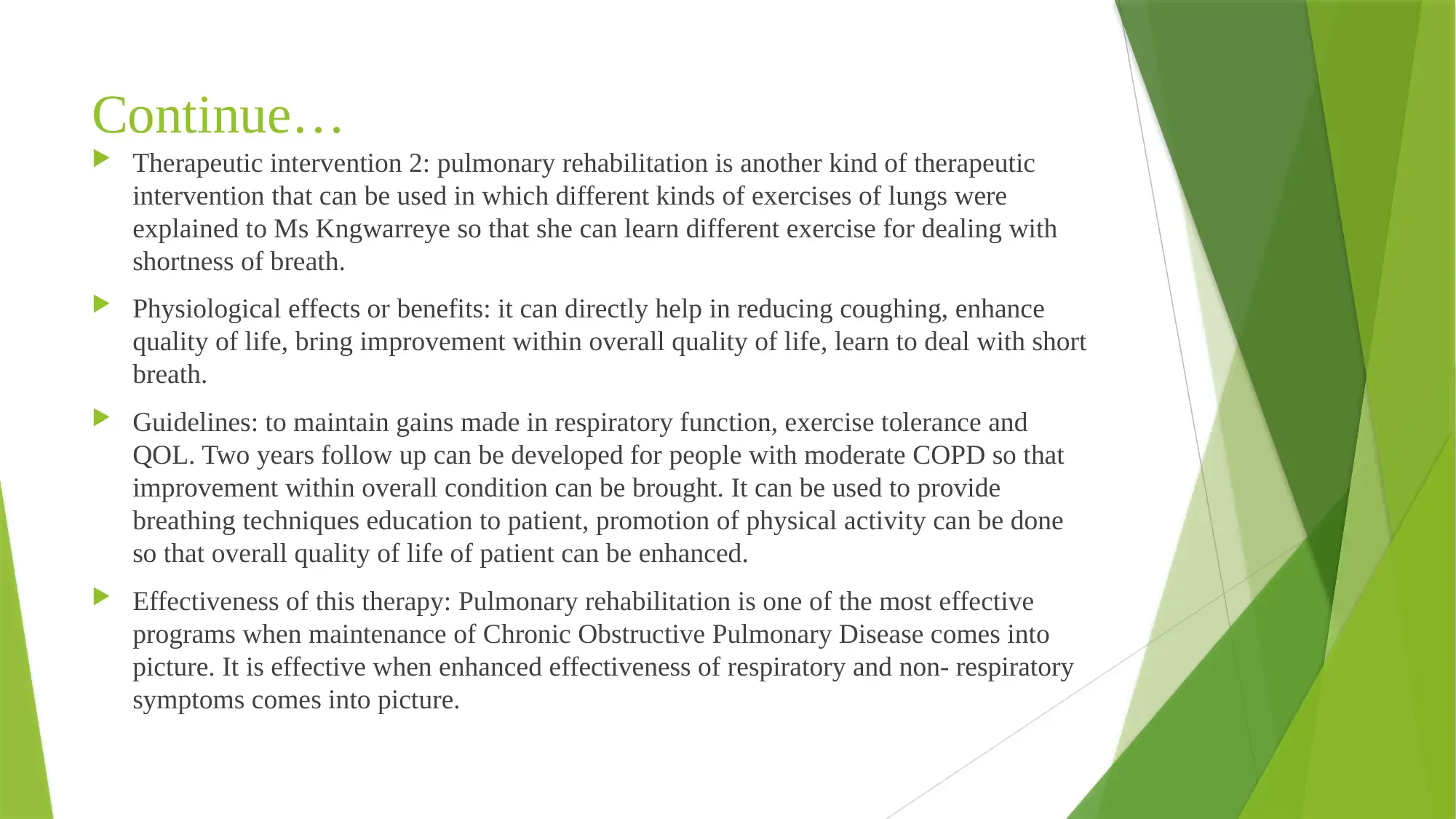
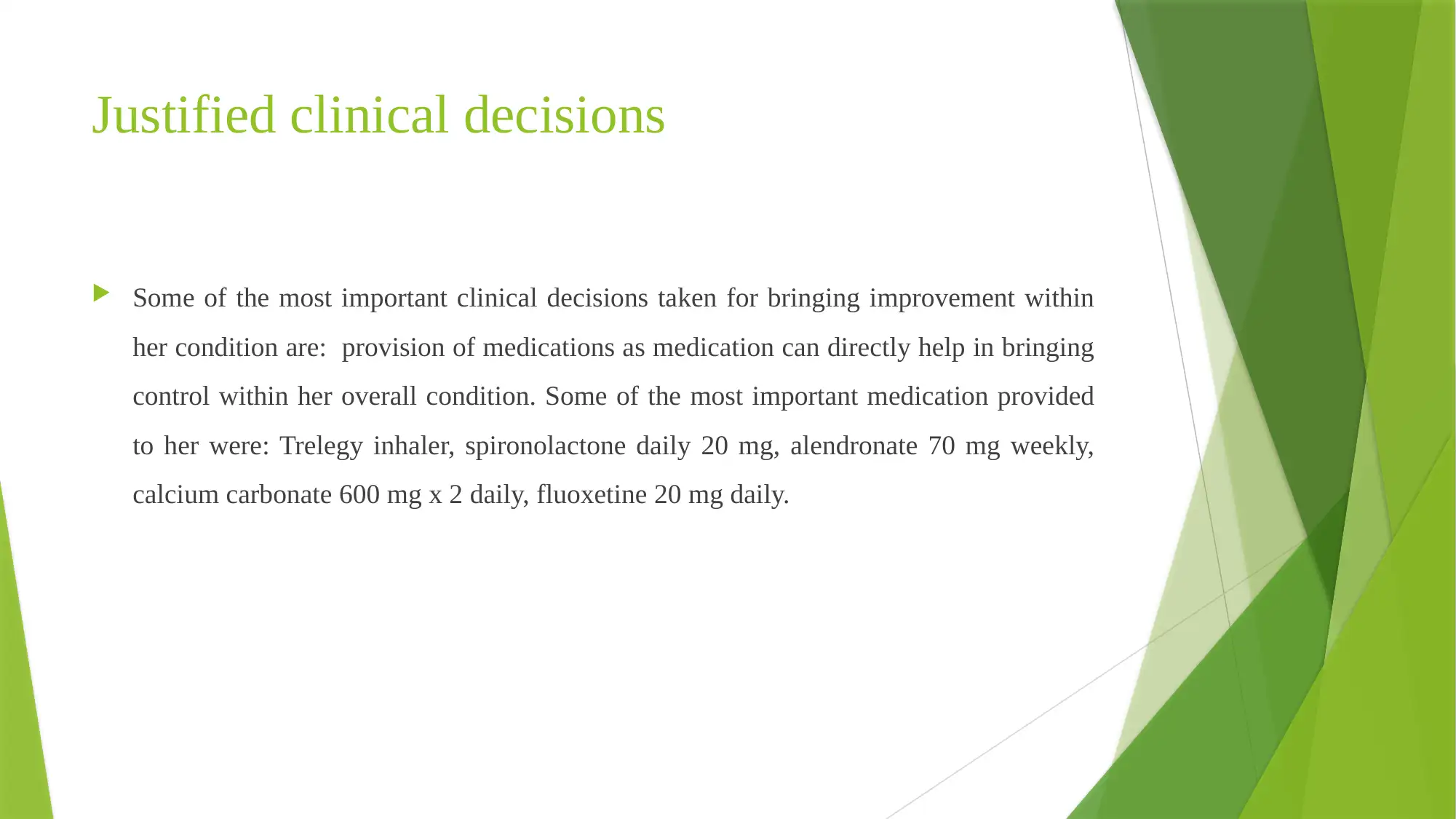
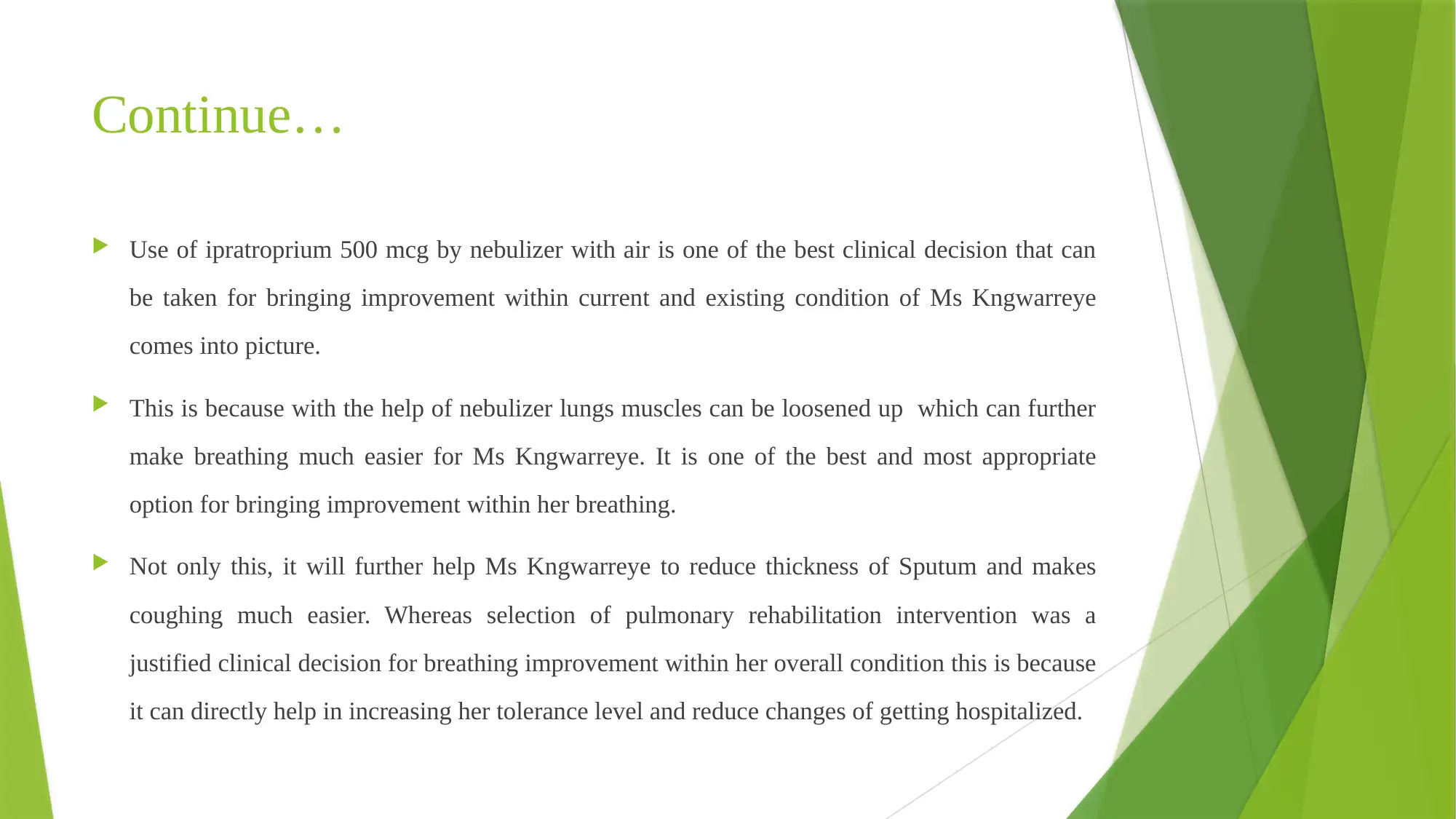






![[object Object]](/_next/static/media/star-bottom.7253800d.svg)